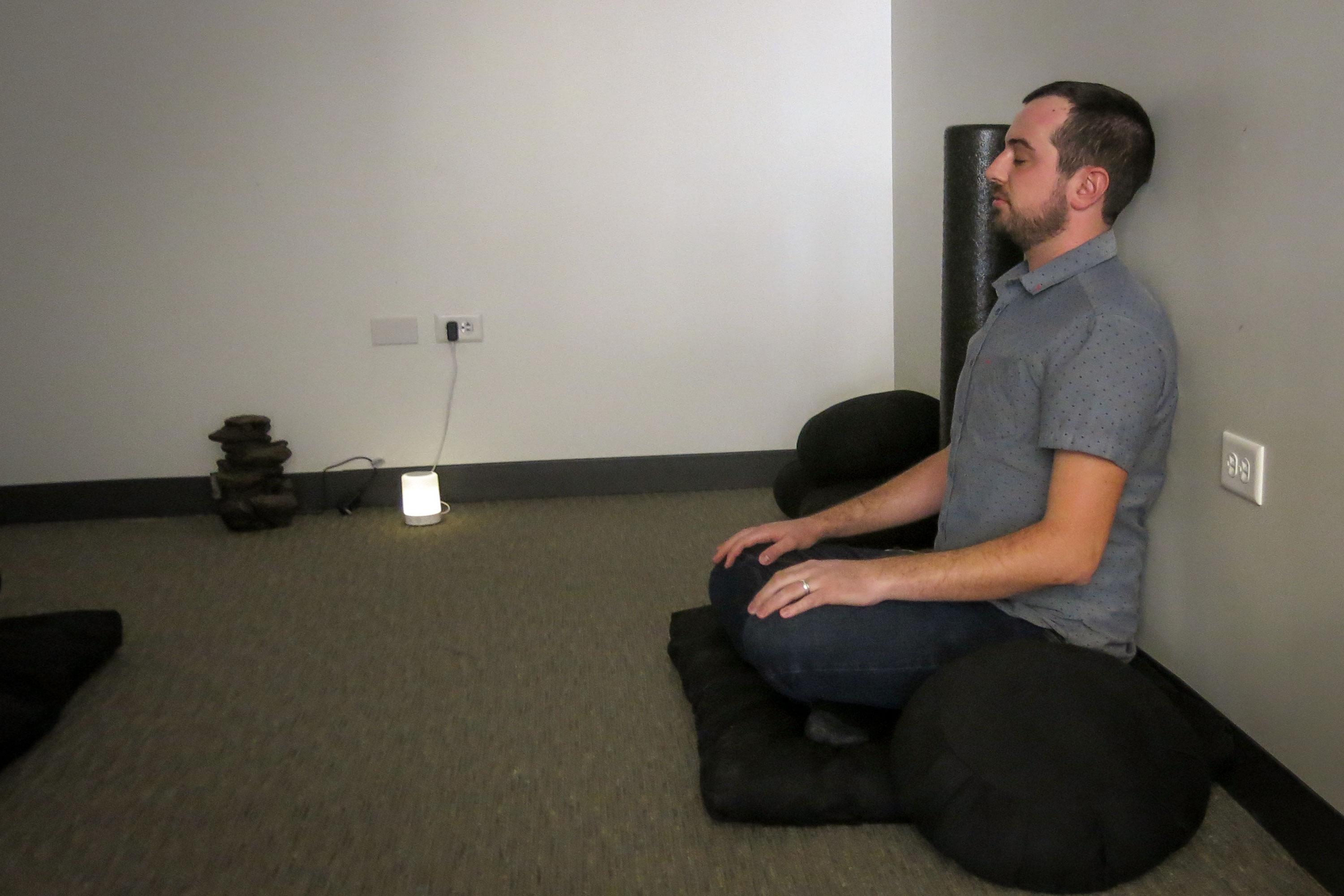

Remember when workplace wellness was about stress management classes, cholesterol screenings or the occasional cash reward in an incentive program? Maybe even the boss’ offer of a treadmill desk?
What if, instead, it was as simple as a serving of fresh fruit?
“Yeah, sure, I still eat the Peanut M&Ms from time to time,” said Chris Masella, an employee at CampMinder, a tech company in Boulder, Colorado. “But having [fresh produce], knowing that I could get an apple and have that in the morning instead is really beneficial.”
Masella is talking about the colorful boxes full of fresh fruits and veggies like bananas, grapes, peppers parked in the company’s break room. Those boxes come from Fruit Revival, who Campminder hired to make regular deliveries of healthy snacks. Business is brisk as co-owner Melissa Edison Barnes sees some companies replace traditional wellness programs. Costs, data tracking and administrative overhead are part of the reason those programs haven’t been successful, Barnes said. “And then a lot of people just — even though their company is paying for it — they don't participate because they just resent it. “
She said it reflects a shift in thinking about wellness programs: it’s less about metrics and “return on investment,” more about creating a healthy culture.
“Companies now are looking at it as much more as a strategy rather than an expense,” she said.
The cost of that 30-serving box of fresh seasonal fruit is $39. CampMinder’s CEO, Dan Konigsberg, said the move is both a “no brainer” and something more. “Philosophically, wellness for us is part of a much larger equation which includes the way that people feel about their work,” he said.
For Konigsberg, wellness “is having a lifestyle where you can you love what you do for work, and you have flexibility and you're eating well,” he said. “And you're taking care of yourself in every way.”

Getting workers to take care of themselves is a big task. A study of 17,000 Colorado employees in 314 businesses published in the journal Health Affairs sheds light on the issue. It found, on average, that employees have more than three chronic health conditions, like diabetes and hypertension. Most are overweight or obese. All those conditions impact sick days, productivity and health costs. The challenge is inspiring companies to change.
Lili Tenney, the co-founder and director of the Colorado nonprofit Health Links has seen a big evolution in the last five years. A new generation of wellness programs aims to get every employee involved. Earlier programs saw a lot of self-selection, a lot engagement from the most motivated workers who are already healthy, but less than stellar participation from other employees.
“The conversation has gone from your company doing a ‘Biggest Loser’ challenge to really talking about having health be personal and making sure it reaches all employees,” Tenney said.
A recent major randomized, controlled study of nearly 5,000 employees in Illinois found minimal benefits from a workplace wellness program in its first year. Researcher David Molitor of the University of Illinois at Urbana-Champaign said “the evidence that exists on what workplace programs do is mixed, and it's pretty limited,” he said. The one obvious plus Molitor’s research identified is that workers who joined were more likely to be screened for health problems.

Back at CampMinder, wellness is about more than just healthy snacks. Each day, there’s an employee-organized yoga break. There’s also a “wellness savings account” run through the Colorado-based employee benefits website ThrivePass that employee Mason Meyer shows off. “We can use that for things like gym memberships,” he said. “I've got a colleague who purchases a new pair of shoes every so often, [and] you can use it on ski passes.”
Each month, Meyer’s employer kicks in a $25 wellness benefit which can go to whatever the employee chooses, like a bike or maybe a new pair of skis. “I really like it. It's a great benefit. It encourages wellness,” he said. “I've actually never skied before and so having this credit makes something like that more accessible.”
Meyer also has begun taking advantage of another thing his workplace offers: a meditation room. It helps him deal with stress. Analiese Brown, CampMinder’s director of talent and culture — the equivalent of an HR director — said the company even lets employees bring dogs to work. Which is a very Colorado thing to do.
“That's not about those surface-level perks,” she said. “It's about showing employees that you care about them as people.”
It’s all about creating a positive environment and giving their employees flexibility and the means to “define wellness on their own terms,” Brown said — which might be a good motto to sum up Workplace Wellness 2.0.








